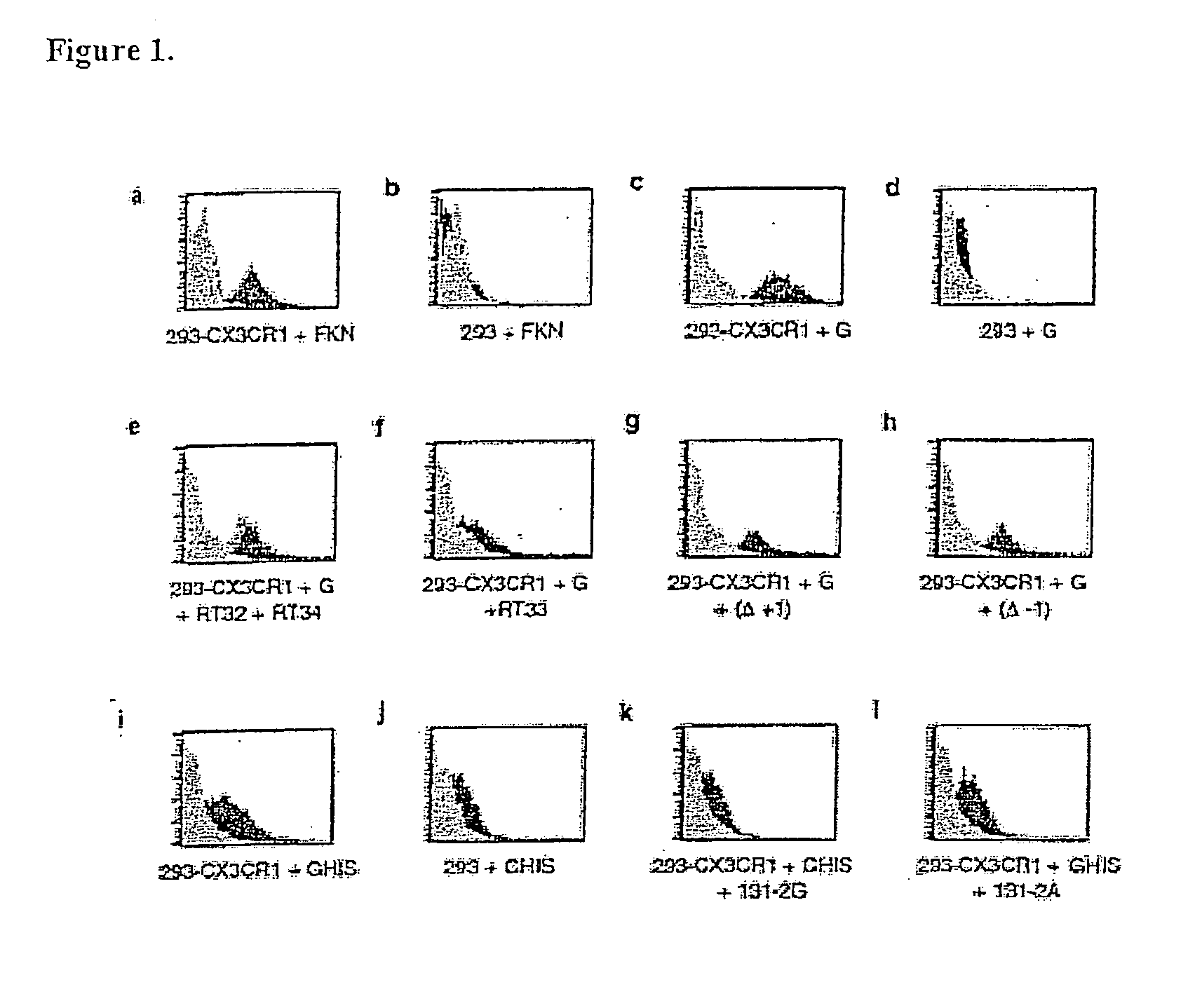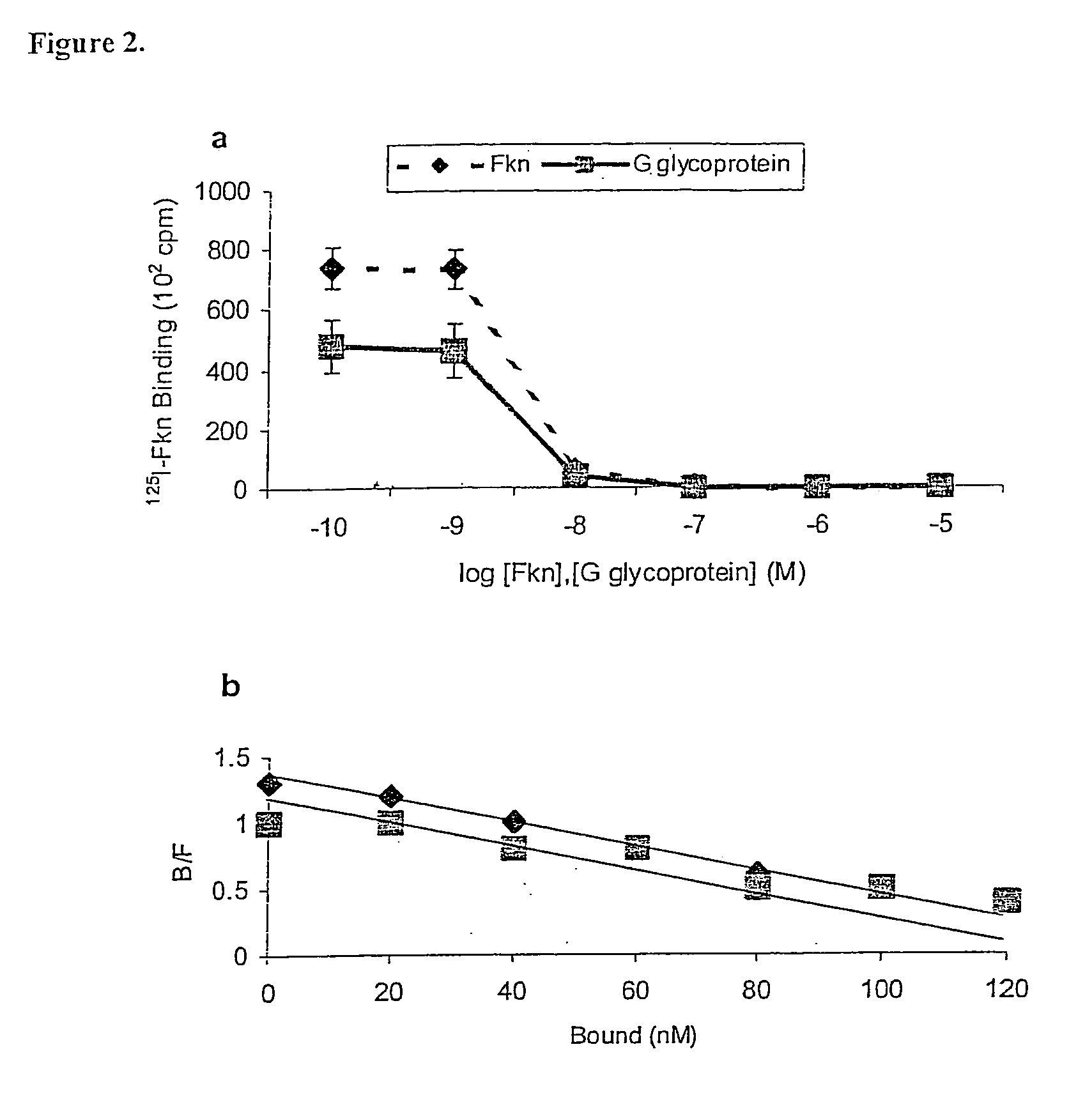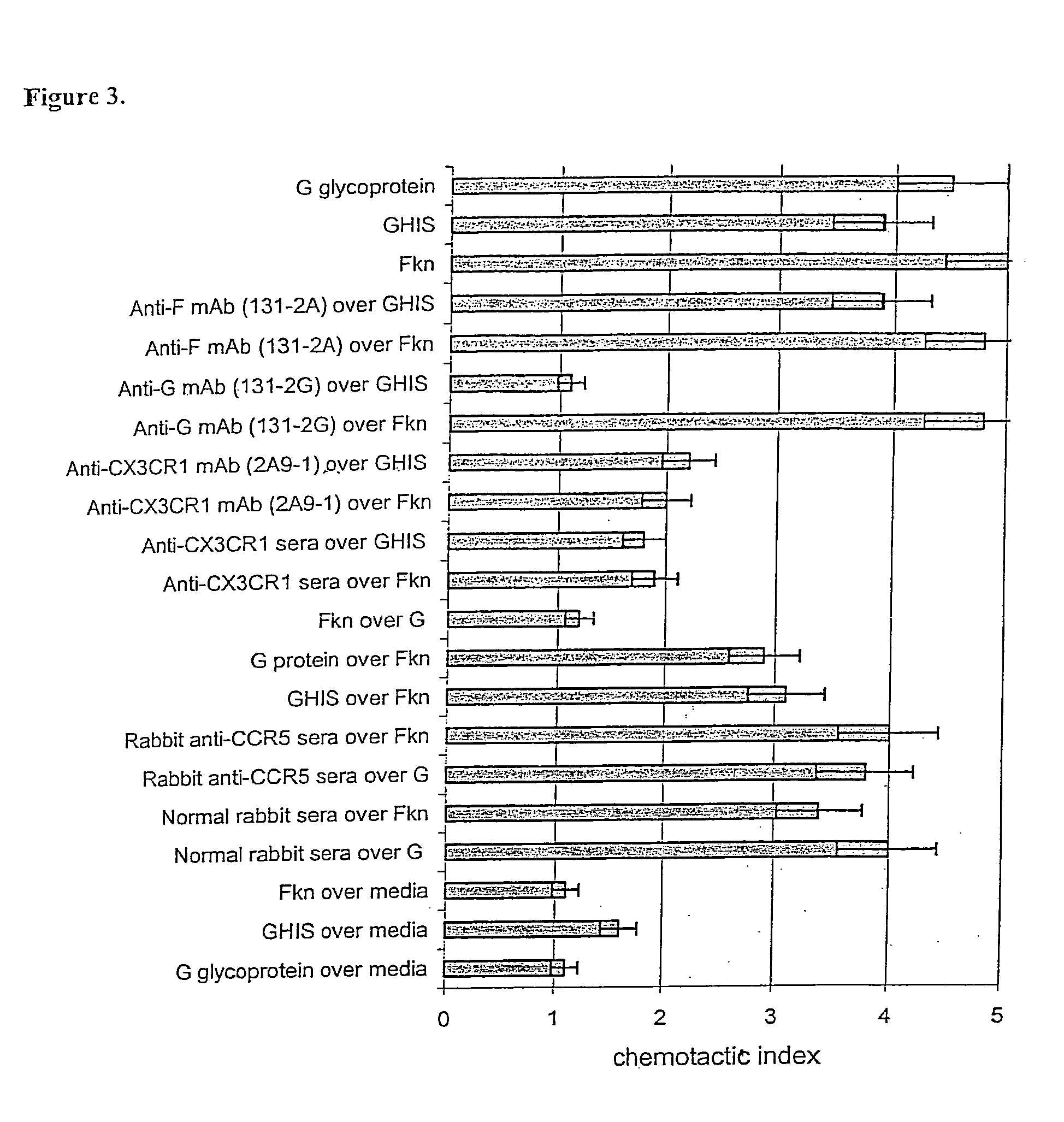Compositions and methods for modulating RSV infection and immunity
a technology of respiratory syncytial virus and composition, which is applied in the field of immunology and virology, can solve the problems of inability to prevent previous infections, rsv infection can be especially serious, and the effort to develop a vaccine has so far failed, so as to achieve safe and effective treatment or prevention of rsv infection.
- Summary
- Abstract
- Description
- Claims
- Application Information
AI Technical Summary
Benefits of technology
Problems solved by technology
Method used
Image
Examples
example 1
Binding Studies
[0105]Purified G glycoprotein was examined for binding to 293-CX3CR1 cells33. A pcDNA 3.1 plasmid containing the CX3CR1 gene and a neomycin resistance gene was used to stably transfect human embryonic kidney (HEK) cells. Neomycin resistance was used for selection and maintenance of plasmid transfection of human embryonic kidney cells. To confirm transfection, lysates of CX3CR1-transfected human embryonic kidney cells were stained with anti-CX3CR1 antibody in Western blot analysis or intact transfected cells were examined by flow cytometry.
[0106]All binding studies were done on ice and either G glycoprotein or human Fkn (R&D Diagnostics, Minneapolis, Minn.) were diluted between 1 nM-100 nM in PBS (GIBCO) containing 1% bovine serum albumin (Sigma) and incubated with the 293-CX3CR1 cells or 293 control cells for 30 min at 4° C. Fractalkine saturated 293-CX3CR1 binding between 1-10 nM. For inhibition studies, 100 pM-1 μM human Fkn or G glycoprotein was preincubated with t...
example ii
Animals
[0124]Six-to-eight week old, specific-pathogen-free, female BALB / c (Jackson Laboratory, Bar Harbor, Me.) mice were used in all experiments. The mice were housed in microisolator cages and were fed sterilized water and food ad libitum. All studies were performed in accordance with the guidelines of the Institutional Animal Care and Use Committee.
Cell Lines
[0125]The African green monkey kidney epithelial cell line, Vero, was propagated in DME (GIBCO) containing 10% FBS (Hyclone), and cultured subconfluently in 75 cm2 flasks (Costar, Corning Inc., Corning, N.Y.) until use.
Virus and Infection
[0126]The A2 strain of RSV (RSV / A2) was used in all experiments and propagated in Vero cells as previously described (54, 55). Mice were anesthetized by i.p. administration of Avertin (2,2,2-tribromoethanol, 0.2 ml / g body weight, Sigma-Aldrich, St. Louis, Mo.), and i.n. challenged with 106 PFU of RSV in Dulbecco's PBS (GIBCO Laboratories, Grand Island, N.Y.). No fewer than three mice per trea...
PUM
| Property | Measurement | Unit |
|---|---|---|
| Fraction | aaaaa | aaaaa |
| Fraction | aaaaa | aaaaa |
| Angle | aaaaa | aaaaa |
Abstract
Description
Claims
Application Information
 Login to View More
Login to View More - R&D
- Intellectual Property
- Life Sciences
- Materials
- Tech Scout
- Unparalleled Data Quality
- Higher Quality Content
- 60% Fewer Hallucinations
Browse by: Latest US Patents, China's latest patents, Technical Efficacy Thesaurus, Application Domain, Technology Topic, Popular Technical Reports.
© 2025 PatSnap. All rights reserved.Legal|Privacy policy|Modern Slavery Act Transparency Statement|Sitemap|About US| Contact US: help@patsnap.com



